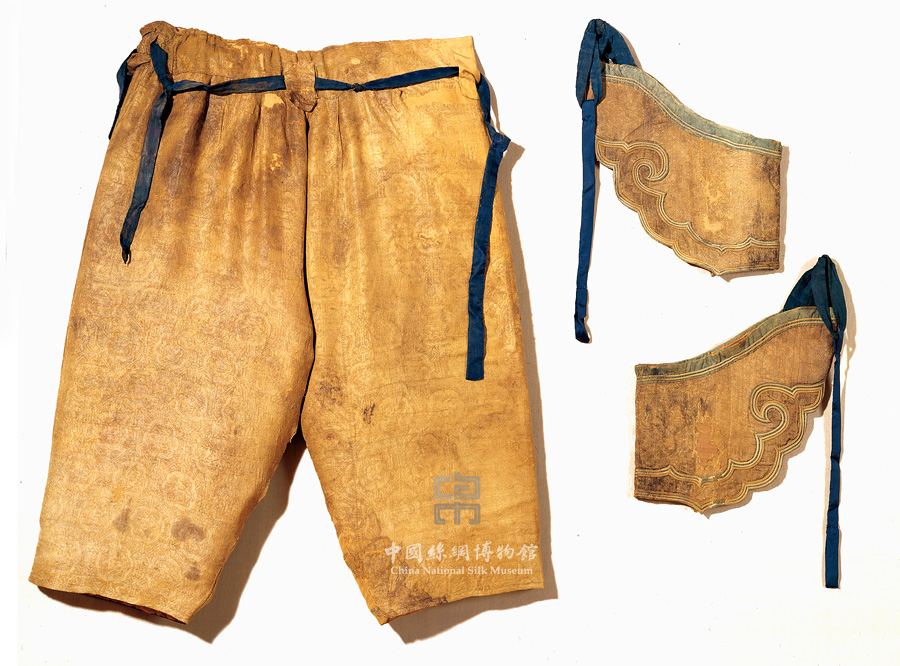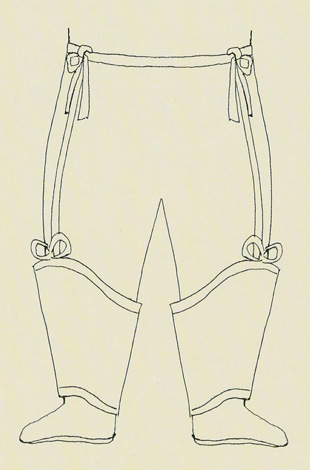

L33cm , H30cm, W18.6cm & L82cm, W68cm for waist, W26cm for leg
There are four belt loops made of blue silk tabby at the waist and inside the right side of the waist are the remains of a piece of leather, indicating that the entirety of the waist probably once had a leather lining. The belt was made of blue silk, attached to the belt was a silk blue ribbon which was tied with the ribbon from the boot cover.
The trousers’ exterior fabric is a polychrome woven silk, the pattern created by the weave is of lobbed, six-sided roundels on a lattice ground. Each roundel encloses a fabulous creature with a long tail, two horns, four feet, sharp beak and spotted pelt, possibly a griffin. The pattern unit is 13cm in warp and 7.2-7.5cm in weft directions. The latticework ground is a well-known pattern documented in a Song dynasty volume on architecture, the Yinzhaofashi by Li jian, and also found on the murals of the Daoist temple, the Yongle Palace, Shanxi province, which date to the Yuan period.
At the Yuan court, decorative silk boot covers were worn on top of the traditional leather boot, as illustrated by a Yuan period depiction of Kublai Khan on a hunting expedition.
The present pair of boot each has a Chinese knotted blue silk ribbon stitched at the top, which would have been connected by another blue silk ribbon to the belt. The curved border at the top of the boot cover is of green silk tabby, 2.6cm wide, and the bottom border has a more decorative ruyi cloud shape, 4 cm wide, made of nasji silk on the front and blue and white double cloth with lotus flower and peony leaves on the back side.
The boot cover itself is made primarily of one piece of nasji. Its repeated design is in units composed of three rows of animal, bird and flower motifs in a strongly Chinese style. The first row has a flying bird and one standing dove, between which is a blossoming peony. The second row has a hare looking backwards and a hare or dog walking forwards, with a lotus flower placed between them. The third row with two flying birds, one like a Chinese ruan phoenix and the other like a wild
goose, has a closed peony blossom after the flying goose. The pattern unit is 16cm in warp and 10.5cm in weft directions.


 Pay attention to us
×
Pay attention to us
×